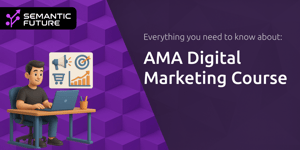In today’s competitive job market, offering robust retirement benefits is not just a perk—it’s a strategic necessity. While the 401(k) is often the default choice, employers and employees alike can benefit from exploring a wider range of plans. By understanding alternative options, businesses can craft tailored solutions that align with their financial goals, workforce demographics, and administrative capacities.
Employee retirement planning extends beyond mere contribution limits; it speaks to long-term wealth accumulation, employee engagement and retention, and tax-deferred growth advantages. This guide will illuminate the major employer-sponsored plans available beyond the 401(k), offering practical insights into selecting and implementing the most suitable options for your organization.
Why Diversifying Retirement Options Matters
Relying solely on a 401(k) plan may leave gaps in coverage for certain employee groups or miss opportunities to optimize tax benefits. By diversifying retirement offerings, employers can:
- Attract and retain talent with customized benefit packages
- Support financial wellness for employees at every career stage
- Adjust contributions based on business performance and budgets
- Leverage unique tax incentives across different plan structures
Beyond improving employee satisfaction, diversified retirement plans can serve as powerful tools for succession planning, especially when incorporating equity-based models. Let’s explore the primary alternatives to the standard 401(k).
Key Employer-Sponsored Plans Beyond the 401(k)
Diverse retirement plans fall into two broad categories: Defined Benefit and Defined Contribution. Defined Benefit plans guarantee a specific payout at retirement, shifting investment risk to the employer. Defined Contribution plans define contribution amounts but leave investment performance—and risk—to participants.
Here are some of the most prevalent options:
- SIMPLE IRA (Savings Incentive Match Plan for Employees): Geared toward small businesses with 100 or fewer employees. Employers must contribute either a 2% non-elective contribution or match up to 3% of an employee’s salary. With lower administrative burdens than a 401(k), the SIMPLE IRA offers straightforward setup and consistent contributions.
- SEP IRA (Simplified Employee Pension): Ideal for businesses of any size, particularly self-employed individuals. Employers make all contributions—up to 25% of compensation, capped at $70,000 for 2025—providing significant flexibility in funding each year.
- 403(b) Plans: Designed for public schools, educational institutions, and certain non-profit organizations. Features mirrors of 401(k) rules with contribution limits set at $23,500 for 2025 and specialized catch-ups for long-term employees.
- 457(b) and 457(f) Plans: Common in government and select tax-exempt settings, offering unique pre-retirement catch-up options and no IRS early withdrawal penalty. Contributions mirror 401(k) limits but provide distinct distribution rules.
- Cash Balance Plans: Hybrid vehicles combining a pension’s guaranteed benefit with an individual account’s clarity. They are particularly attractive for firms aiming to deliver substantial deductions and accelerated retirement funding for senior employees.
- Employee Stock Ownership Plans (ESOPs): Facilitate employee ownership through company stock contributions. ESOPs align employee interests with business performance, supporting succession planning strategies and potential tax advantages.
- Profit-Sharing Plans: Allow discretionary contributions from employers based on annual profits. With contribution limits up to $70,000 per participant for 2025, these plans offer flexible employer funding tailored to business cycles.
- Non-Qualified Deferred Compensation (NQDC) Plans: Targeted at executives, these plans carry no IRS contribution limits but less insulation from creditors and tax liabilities. They stand as compelling incentives within comprehensive executive compensation packages.
Selecting the Right Plan for Your Organization
Choosing the optimal retirement vehicle requires a systematic assessment of your company’s size, cash flow, workforce demographics, and administrative capacity. Consider the following factors:
- Business Size and Structure: Small businesses often gravitate toward SIMPLE and SEP IRAs for their low setup costs and minimal reporting requirements. Larger enterprises, in contrast, may offer complex plans like ESOPs or Cash Balance Plans to accommodate high-earning executives.
- Employee Demographics: Younger workforces may value Roth contribution options and liquidity, while tenured employees often benefit from lifetime catch-up features in 403(b) or 457(b) plans. Equity-focused staff might find ESOPs particularly motivating.
- Administrative Resources: Plans like 401(a) or ESOPs carry substantial compliance, reporting, and trustee obligations. IRAs typically demand less overhead, making them practical for organizations lacking dedicated HR or finance personnel.
- Tax and Funding Flexibility: Profit-sharing and SEP IRAs allow contributions to vary annually, aligning with profit margins. Defined Benefit and Cash Balance Plans can deliver accelerated deductions, especially in later years when sponsoring profitable enterprises seek larger tax shields.
Implementing and Communicating Your Plan
Introducing a new retirement option requires clear, consistent communication. Host educational sessions, provide one-on-one consultations, and distribute easy-to-digest materials. When participants comprehend program benefits and mechanics, they are more likely to engage and maximize contributions.
Partner with qualified financial advisors and third-party administrators to navigate regulatory complexities, ensure ERISA compliance, and set up seamless contribution systems. Leverage technology platforms that integrate payroll, eligibility tracking, and reporting to streamline administration.
Fostering a Culture of Retirement Readiness
A retirement plan’s value goes beyond numbers; it reflects an organization’s commitment to employee well-being and future security. Cultivate a culture where financial wellness is discussed openly. Offer webinars on budgeting, debt reduction, and investment basics. Encourage regular contribution reviews and goal-setting sessions.
By positioning retirement planning as a shared journey, employers reinforce long-term loyalty and help employees visualize the tangible impact of today’s decisions on their tomorrows. This holistic approach can transform a standard benefit into a cornerstone of company culture.
Conclusion
Exploring retirement plans beyond the ubiquitously offered 401(k) enables organizations to deliver customized, tax-efficient, and motivating benefits. Whether through simple IRAs, robust Cash Balance Plans, or employee-centric ESOPs, each option carries unique advantages.
By conducting a thoughtful needs analysis, selecting suitable vehicles, and communicating effectively, businesses can foster financial well-being and secure the futures of their teams. Begin the journey today, and empower your workforce with the clarity and confidence to chart their retirement goals.














